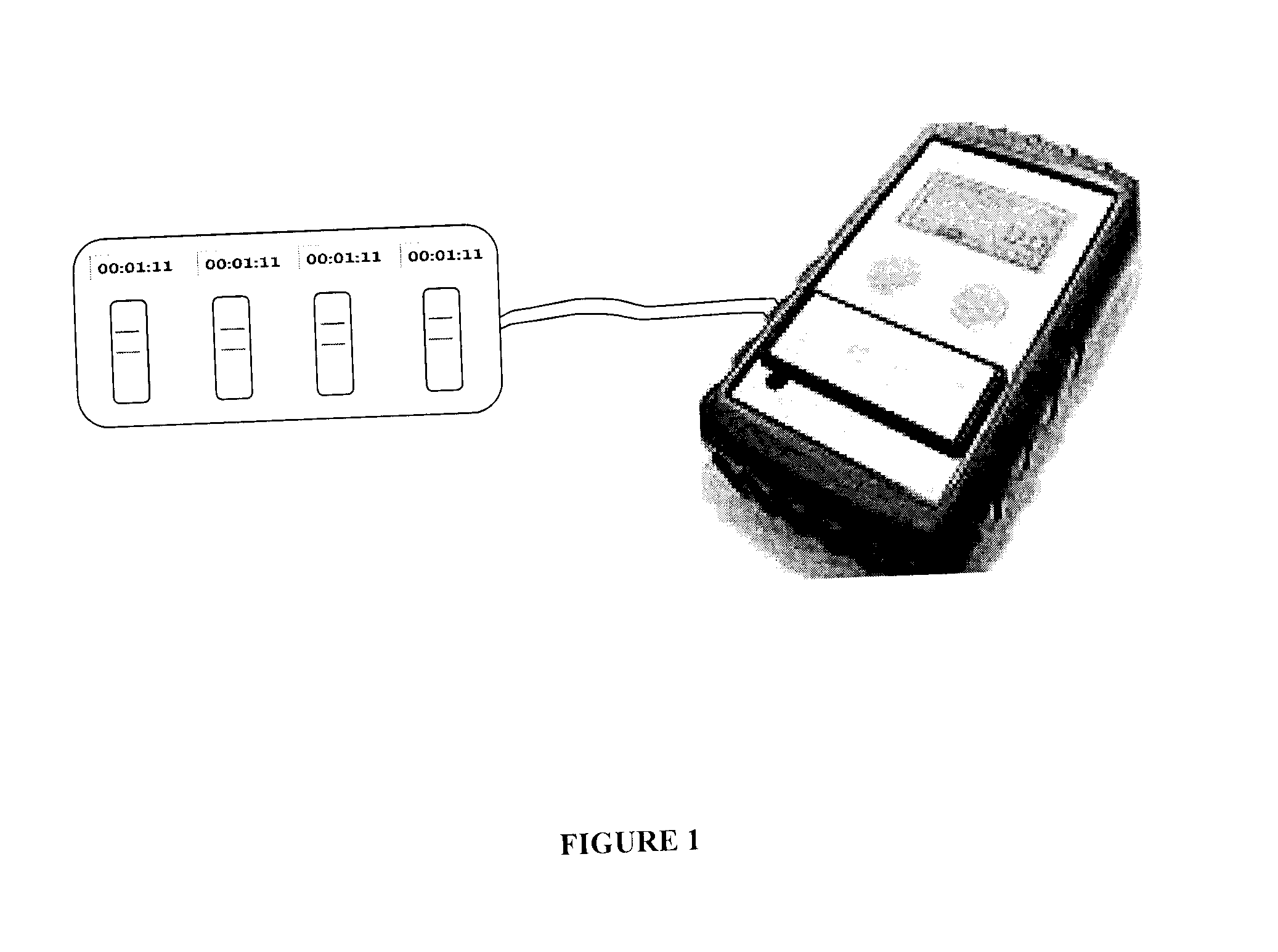Quality control sensor method, system and device for use with biological/environmental rapid diagnostic test devices
a technology of quality control and sensor method, applied in the direction of thermometers, electric digital data processing, instruments, etc., can solve the problems of one or more inaccurate diagnostics, pre-analytical steps, reading errors,
- Summary
- Abstract
- Description
- Claims
- Application Information
AI Technical Summary
Benefits of technology
Problems solved by technology
Method used
Image
Examples
Embodiment Construction
[0076]Preferred embodiments of the quality control (“QC”) sensor system, method, and device according to the invention are alternately herein referred to, collectively and / or individually, as the QC system, method and / or device (or simply as the system, method and / or device). References to one or more of the QC sensor system, method and / or device may, if and as appropriate, be understood by persons having ordinary skill in the art to apply, mutatis mutandis, to the others.
[0077]As aforesaid, the QC sensor system, method and device according to the invention are preferably for use with one or more biological and / or environmental rapid diagnostic test (“RDT”) devices. Each of the RDT devices has a RDT cassette bed. According to the invention, QC sensors are provided for QC of the RDT devices.
[0078]RDT cassettes are preferably provided with barcodes and / or radio frequency identification (“RFID”) chips which preferably encode cassette information associated with the cassettes. The casse...
PUM
 Login to View More
Login to View More Abstract
Description
Claims
Application Information
 Login to View More
Login to View More - R&D
- Intellectual Property
- Life Sciences
- Materials
- Tech Scout
- Unparalleled Data Quality
- Higher Quality Content
- 60% Fewer Hallucinations
Browse by: Latest US Patents, China's latest patents, Technical Efficacy Thesaurus, Application Domain, Technology Topic, Popular Technical Reports.
© 2025 PatSnap. All rights reserved.Legal|Privacy policy|Modern Slavery Act Transparency Statement|Sitemap|About US| Contact US: help@patsnap.com


